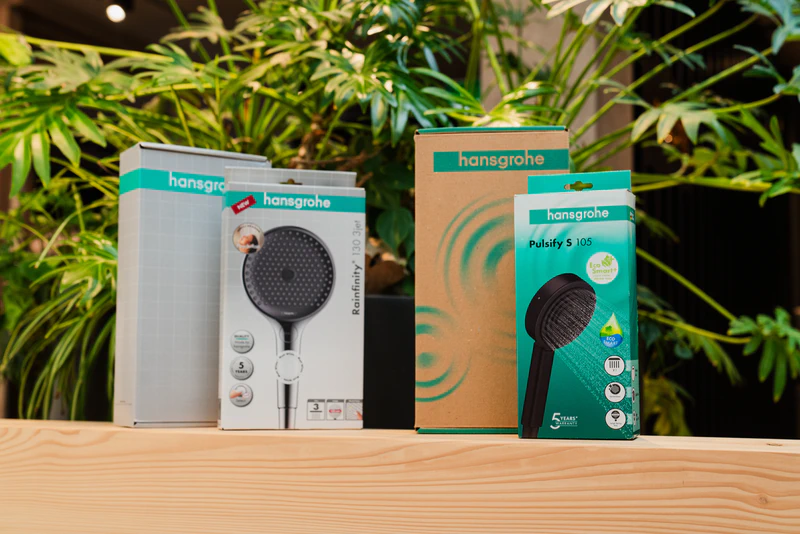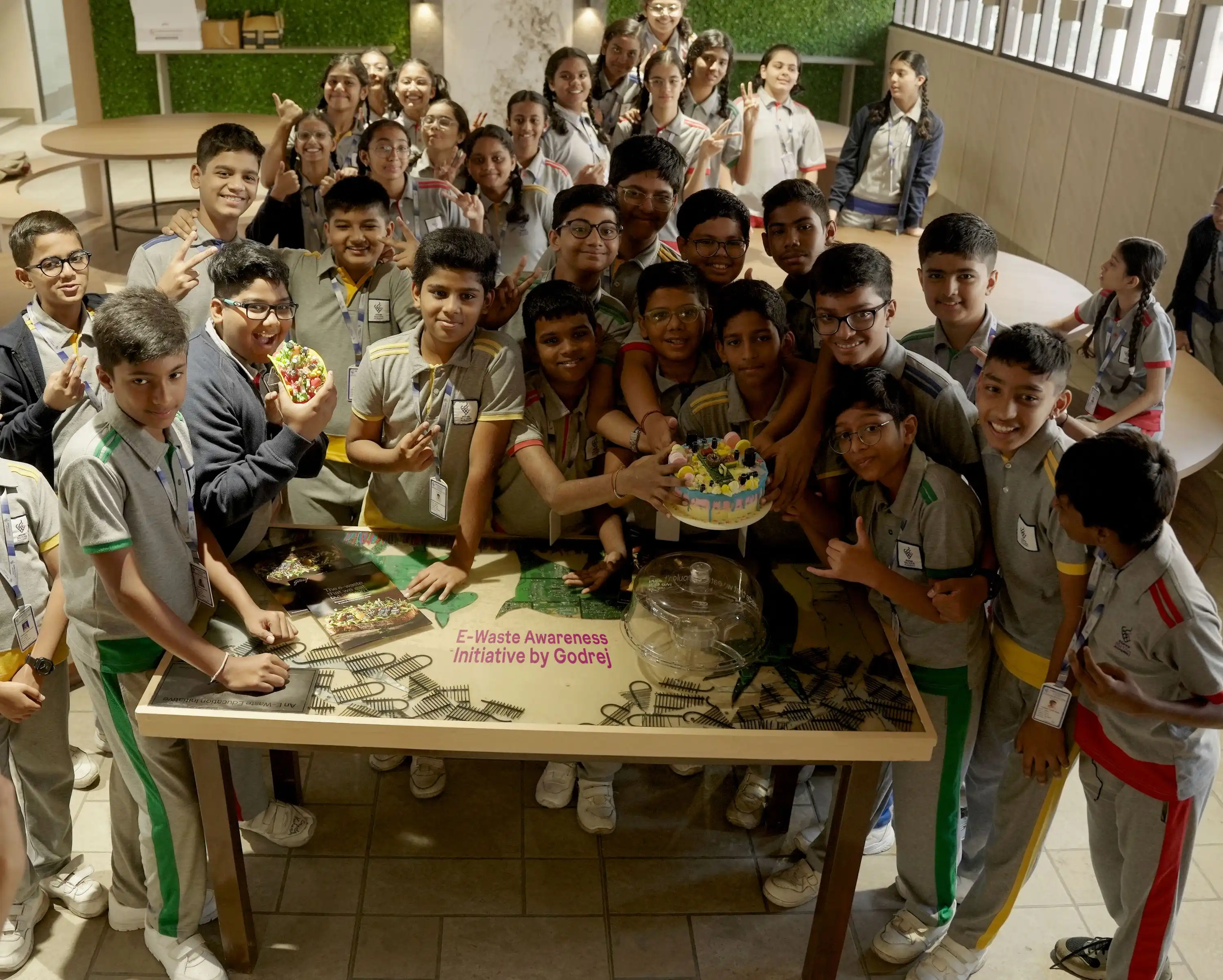The Hansgrohe Group will switch to paper product packaging in Germany by the end of 2025. The cardboard and paper elements used for this can be completely recycled after use.
On the way to 100% plastic-free
The Green Company team at Hansgrohe Group, the innovative thinking cell of the group’s sustainability strategy, is responsible for the switch from plastic to paper. Project manager Torsten Mayer, says, “It is our own motivation to apply the sustainability triad of Reduce, Reuse & Recycle to our product packaging. At the same time, more and more of our B2B and B2C customers are actively demanding this." Thanks to the paper campaign, the Hansgrohe Group will save around 312 tons of plastic packaging in the German manufacturing and logistic sites every year, especially in scratch and impact protection, i.e. the elements that protect the faucets and showers in the boxes from scratches and transport damage. Instead of flat bags, bubble wrap, chain bags, adhesive films and cable ties, substitutes made of cardboard or paper are used for product packaging.
“We are currently still working on achieving a quota of 100% paper. That’s why we are being completely transparent: as things stand today, we are still a few percent short of reaching our target in full,” says Mayer. “The reason for this is that although we now have paper alternatives for almost all products and surface variations, as well as side packs, these have not yet been fully implemented in the production process. In addition, as things stand, there are still some indispensable plastic components in packaging that cannot currently be replaced by paper due to their properties - only with recycled plastic. "
Less plastic packaging means less microplastics in the sea
In Germany alone, the largest proportion of all plastic waste comes from sales packaging - a total of around 1.5 million tons per year. Less plastic in packaging reduces the risk of plastic being disposed of improperly, ultimately polluting waterways in the form of microplastic, making humans and animals ill. Every piece of plastic in nature is one too many. This is illustrated by the example of a plastic bottle: it takes up to 450 years for it to completely decompose in the sea.
At the same time Hansgrohe is eliminating plastic in product packaging, the group is also reducing the number of packaging sizes and variations in its product boxes. This is because fewer and more space-saving product packaging optimizes transport and warehouse logistics.

Why paper instead of plastic?
Paper is an excellent recycling material, as paper fibers can be recycled ten to 25 times. And because the paper recycling cycle works very well throughout Europe with a recycling rate of 95.4 percent, paper will be the packaging material of choice for Hansgrohe in the future. Plastic waste recycling cycles in Europe, on the other hand, are not yet optimally organized. A large proportion of the plastic waste generated in Europe is not recycled but is still shipped to third countries with an unclear destination. The fact that plastic waste is often dumped illegally in the sea is proven by numerous examples that have become public.
Hansgrohe is committed to less plastic in the world
Hansgrohe has been sponsoring the swimming professor Andreas Fath for years. The chemist has made it his goal to raise public awareness of the vast quantities of microplastics that end up in the world’s oceans and even in the Arctic via rivers. To this end, Fath has already swum the Rhine and Danube. His new project starts this year: in the summer, he will swim across the Elbe from its source to its mouth in the North Sea. He will be accompanied on his journey by various water samples, students from his faculty - and, of course, Hansgrohe.





